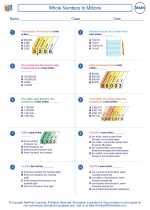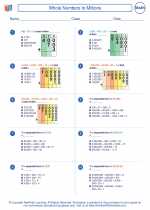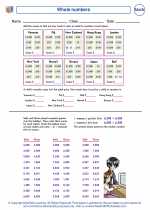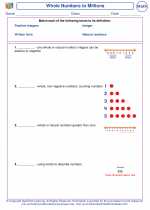Comparing Numbers
When we compare numbers, we are looking at how one number relates to another. This can be done using symbols such as <, >, and =.
Comparing Whole Numbers
When comparing whole numbers, we look at the place value of each digit to determine which number is greater, less than, or equal to the other.
For example, let's compare the numbers 352 and 467:
3 in the hundreds place is less than 4 in the hundreds place, so 352 < 467.
Comparing Decimals
When comparing decimals, we also look at the place value of each digit to determine which number is greater, less than, or equal to the other.
For example, let's compare the numbers 3.25 and 3.5:
3 in the ones place is equal, 2 in the tenths place is less than 5 in the tenths place, so 3.25 < 3.5.
Comparing Fractions
When comparing fractions, we can find a common denominator and then compare the numerators to determine which fraction is greater, less than, or equal to the other.
For example, let's compare the fractions 1/4 and 2/5:
Find a common denominator, which is 20. Then convert the fractions to have the common denominator: 1/4 becomes 5/20 and 2/5 becomes 8/20. Then we compare the numerators, so 1/4 < 2/5.
Study Guide
- Understand the place value of each digit in the numbers being compared.
- Use the appropriate comparison symbols (<, >, =) to compare the numbers.
- For fractions, find a common denominator and compare the numerators.
- Practice comparing whole numbers, decimals, and fractions using worksheets and exercises.
By understanding the place value and using the correct comparison symbols, you can effectively compare different types of numbers.
.◂Math Worksheets and Study Guides Fifth Grade. Whole Numbers to Millions

 Worksheet/Answer key
Worksheet/Answer key
 Worksheet/Answer key
Worksheet/Answer key
 Worksheet/Answer key
Worksheet/Answer key
 Worksheet/Answer key
Worksheet/Answer key
 Worksheet/Answer key
Worksheet/Answer key
 Vocabulary/Answer key
Vocabulary/Answer key
